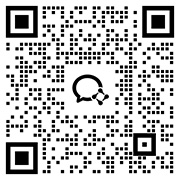2026年考博英語外刊第7期丨Which Is Safer?
- 1
- 6
- 8
摘要:9月是考博英語復(fù)習(xí)的關(guān)鍵期。外刊閱讀是提升閱讀速度和理解深度的“黃金鑰匙”。本期精選2025年《Discover Magazine》的一篇文章,助力同學(xué)們攻克考博英語閱讀理解!
本期精選2025年《Discover Magazine》的一篇文章,助力考生們攻克考博英語閱讀理解。
本期題材:食品健康&科普
雜志簡(jiǎn)介:
Discover Magazine《發(fā)現(xiàn)》,是一本創(chuàng)刊于1980年的美國(guó)著名大眾科學(xué)(Popular Science)期刊。緊跟科學(xué)前沿,報(bào)道最新的科研發(fā)現(xiàn)、技術(shù)突破和科學(xué)爭(zhēng)議,讓讀者了解“科學(xué)正在發(fā)生什么”。對(duì)于準(zhǔn)備醫(yī)學(xué)、理工科或其他專業(yè)博士入學(xué)英語考試(尤其是閱讀和寫作部分)的考生來說,定期閱讀《Discover》雜志具有顯著的幫助。
本期內(nèi)容
Wood vs. Plastic Cutting Boards: Which One Is Cleaner and Healthier?
一、閱讀全文
【1】Dean Cliver, an expert in food microbiology at the University of California Davis, was the OG of cutting-board research. In the early 1990s, Cliver, who died in 2011, and his colleagues set out to discover how home cooks could clean their wooden cutting boards so that wooden boards would be as safe to use as the plastic variety.
【2】But the results of their experiments showed that the plastic boards weren’t necessarily safer than the wooden ones. Or to be more precise, under the same experimental conditions, the wooden boards harbored fewer bacteria than the plastic ones. (Science is like that. You don’t always find what you’re expecting. And if you do always find what you’re expecting, you might want to re-think your approach.)
【3】Plastic boards are easier to sanitize. But wood has some properties that plastic doesn’t. For one thing, the woods commonly used in cutting boards are harder than plastic, so they’re less likely to end up with lots of grooves and gouges that can provide cozy homes for colonies of bacteria.
【4】But, perhaps the most intriguing finding concerns a feature of wood you might think was a downside: Wood is porous. In a study published in 1994, Cliver and colleagues found that when the researchers inoculated the wooden boards with bacteria, it was difficult to recover the bacteria. That’s because it was no longer on the surface of the wood. The bacteria had been drawn into the interior of the wood.
【5】The authors of a 2023 study explain how this happens: When cutting boards are washed, the wood soaks up the water, along with any remaining bacteria, leaving the surface of the wood clean. The bacteria, trapped inside the board, eventually die.
【6】Though all types of wood tested had some antibacterial effect, some woods (red oak and white oak) were better at removing Listeria, while others (European beech) were better at removing Salmonella, according to the 2023 study.
【7】That research also found that the finish on the wood matters. Cutting boards treated with linseed oil or mineral oil did not absorb the bacteria as well as untreated boards, at least for 24 hours, leaving more bacteria on the surface. The authors recommend passing on those wood treatment products often sold alongside wooden cutting boards and chopping blocks.
【8】One concern about plastic boards is that tiny bits of plastic — microplastics — can chip off the board when you’re chopping your chops or slicing your carrots and get into your food.
【9】Although there hasn’t been a lot of research in this area, several studies have raised concerns. For example, one recent study found that plastic cutting boards can be a substantial source of microplastics in food. Until more research is done, however, we won’t know if this could impact health.
【10】So, which is best, plastic or wood? Barring more research on microplastic contamination, either is fine, say most experts. The issue is not so much which type of cutting board you use but how you use and care for it, explains Janet Buffer, food-safety expert at George Washington University’s Milken Institute School of Public Health.
【11】No matter what your cutting board is made of, you need to be scrupulous about cleaning it, she says. That means washing the board in hot soapy water after every use. (For plastic boards, this can be done in the dishwasher, but the high heat of dishwashers warps and cracks wooden boards.) Once the board has been thoroughly scrubbed, give it a sanitizing rinse. Buffer recommends a mild solution of one teaspoon of bleach to two cups of water.
【12】Another best practice, according to Buffer, is to use separate boards for veggies and meats. And vegetarians take note: You need to be just as careful as carnivores when it comes to cleanliness. Buffer points out that produce, especially leafy greens, has been implicated in outbreaks of food-borne illness.
【13】“So even after you've handled produce, wash, rinse, and sanitize your cutting board after use,” she says.
二、開始做題
1. What did Dean Cliver and his colleagues initially aim to discover in their 1990s research?
A. Why wooden cutting boards were more popular than plastic ones.
B. How home cooks could sanitize wooden boards to match plastic boards’ safety.
C. Whether plastic boards were inherently more resistant to bacteria than wooden ones.
D. The impact of different wood types on bacterial growth.
2. What significant impact does the finish on the surface of wood have on the antibacterial effect?
A. Treated wood absorbed bacteria more effectively than untreated wood.
B. Treated wood reduced bacterial absorption by 50% compared to untreated wood.
C. Treated woodinitially retained more bacteria on its surface than untreated wood.
D. Treated wood had no significant impact on bacterial absorption.
3. What is the main conclusion of the article regarding the choice between wood and plastic cutting boards?
A. Wood is always safer because it naturally kills bacteria.
B. Plastic is superior due to its ease of dishwasher cleaning.
C. Both materials are equally safe if used and cleaned properly.
D. Microplastics from plastic boards make wood the only safe option.
答案+解析
1.【答案】B
【考查點(diǎn)】細(xì)節(jié)事實(shí)題。
【解題思路】根據(jù)題干關(guān)鍵詞Dean Cliver and his colleagues定位到第一段第二句In the early 1990s, Cliver,… and his colleagues set out to discover how home cooks could clean their wooden cutting boards so that wooden boards would be as safe to use as the plastic variety.(在上世紀(jì)90年代初,克里弗及其團(tuán)隊(duì)著手探索:家庭廚師如何清潔木制砧板,才能使其安全性與塑料砧板不相上下。)選項(xiàng)B與原文意思相符,故正確。選項(xiàng)A、C、D與第一段的研究目標(biāo)皆不相符,故排除。
2.【答案】C
【考查點(diǎn)】細(xì)節(jié)事實(shí)題。
【解題思路】根據(jù)題干關(guān)鍵詞the finish on the surface of wood定位到第七段第一句,由后文Cutting boards treated with linseed oil or mineral oil did not absorb the bacteria as well as untreated boards, at least for 24 hours, leaving more bacteria on the surface.(經(jīng)亞麻籽油或礦物油處理過的木制砧板,在至少24小時(shí)內(nèi)對(duì)細(xì)菌的吸附能力明顯弱于未處理砧板,導(dǎo)致更多細(xì)菌殘留于表面。)可知,經(jīng)過涂層處理的木板在初期表面會(huì)殘留更多細(xì)菌。選項(xiàng)C與文中所述內(nèi)容相符,故正確。選項(xiàng)A與原文的treated wood absorbed bacteria less well(處理后的木材吸收細(xì)菌的能力較差)意思相反,故排除;選項(xiàng)B在文中未提及,故排除;選項(xiàng)D與原文所表達(dá)的意思相矛盾,故排除。
3.【答案】C
【考查點(diǎn)】主旨大意題。
【解題思路】由文章第十段第二、三句Barring more research on microplastic contamination, either is fine, say most experts. The issue is not so much which type of cutting board you use but how you use and care for it…(大多數(shù)專家表示,除非有更多關(guān)于微塑料污染的研究,否則兩者都可以選用。問題的關(guān)鍵不在于砧板的材質(zhì),而在于你如何使用與護(hù)理它。)可知,作者的核心結(jié)論是:只要正確使用和清潔,兩種材質(zhì)的砧板安全性相當(dāng)。選項(xiàng)C與原文所表達(dá)的意思相符,故正確。選項(xiàng)A忽略了清潔方式的影響,故排除;選項(xiàng)B與原文“多數(shù)專家認(rèn)為兩者均可選用”相矛盾,故排除;選項(xiàng)D夸大了微塑料的風(fēng)險(xiǎn),且原文明確表示了“兩種材質(zhì)均可選用”,故排除。
三、重點(diǎn)詞匯+長(zhǎng)難句
【全文共22個(gè)重點(diǎn)詞匯,看到不熟悉的詞匯,記得劃線哦!】
harbor /?hɑ?b?(r)/ v. 居住,生存
sanitize /?s?n?ta?z/ vt. 給……消毒
groove /ɡru?v/ n. 凹槽
gouge /ɡa?d?/ n. 溝;圓鑿
intriguing /?n?tri?ɡ??/ adj. 非常有趣的,引人入勝的
porous /?p??r?s/ adj. 多孔滲水的
inoculate /??n?kjule?t/ v. 給……接種
antibacterial /??ntib?k?t??ri?l/ adj. 抗菌的,滅菌的
oak /??k/ n. 橡木,櫟木
linseed /?l?nsi?d/ n. 亞麻籽
mineral /?m?n?r?l/ n. 礦物質(zhì);礦物
chop /t??p/ n.(羊或豬)排
substantial /s?b?st?n?(?)l/ adj. 重要的
Barring /?bɑ?r??/ prep. 除非
contamination /k?n?t?m??ne??(?)n/ n. 污染
scrupulous /?skru?pj?l?s/ adj. 細(xì)致的,一絲不茍的
warp /w??p/ v.(使)扭曲,(使)變形
scrub /skr?b/ v. 擦洗;刷洗
rinse /r?ns/ v. 沖洗,洗涮
bleach /bli?t?/ n. 漂白劑,消毒劑
carnivores /ka:niv?:z/ n. 食肉動(dòng)物;肉食者
implicate /??mpl?ke?t/ v. 表明(或意指)……是起因
掃碼進(jìn)入小程序>>> 博士報(bào)名條件查詢
| 掃碼添加課程顧問>>> 考博英語題型咨詢
|
備考資料:考博英語高頻詞匯丨考博英語各院校考情分析丨120+院校考博英語真題(中科院、社科院、央美等)
| 課程名稱 | 課程價(jià)格 | 有效期 | 課程鏈接 |
| 2026年博士招生簡(jiǎn)章匯總 | 免費(fèi) | 永久 | 立即查看 |
120+院校歷年考博英語真題 | 免費(fèi) | 365天 | 免費(fèi)領(lǐng)取 |
2026考博英語高頻詞匯 | 免費(fèi) | 365天 | 免費(fèi)領(lǐng)取 |
考博英語各院校考情分析合集 | 免費(fèi) | 30天 | 點(diǎn)擊試聽 |
考博上岸學(xué)員備考經(jīng)驗(yàn)分享 | 免費(fèi) | 365天 | 點(diǎn)擊試聽 |
| 個(gè)性化備考指導(dǎo)課程(小白入門) | 免費(fèi) | 365天 | 點(diǎn)擊試聽 |
| 考博英語各題型解題技巧課合集 | 免費(fèi) | 365天 | 點(diǎn)擊試聽 |
| 決勝博士之路:英語備考全攻略 | 免費(fèi) | 365天 | 點(diǎn)擊試聽 |
| 考博英語-中譯英破題妙招 | 免費(fèi) | 365天 | 點(diǎn)擊試聽 |
| 考博英語-中譯英突破命題核心 | 免費(fèi) | 365天 | 點(diǎn)擊試聽 |
| 考博英語中譯英之句式選擇 | 免費(fèi) | 365天 | 點(diǎn)擊試聽 |
| 考博英語英譯中之定語從句的翻譯技巧 | 免費(fèi) | 365天 | 點(diǎn)擊試聽 |
| 長(zhǎng)難句與閱讀雙管齊下 | 免費(fèi) | 365天 | 點(diǎn)擊試聽 |
| 考博英語-寫作預(yù)測(cè)復(fù)盤公開課 | 免費(fèi) | 365天 | 點(diǎn)擊試聽 |
| 通用考博4000+詞匯朗讀視頻教程 | 免費(fèi) | 365天 | 點(diǎn)擊試聽 |
| 更多考博英語課程請(qǐng)點(diǎn)擊查看 | |||
延伸閱讀
- 國(guó)防科技大學(xué)2026年博士研究生招生目錄
- 國(guó)防科技大學(xué)2026年博士研究生招生簡(jiǎn)章
- 三個(gè)月逆襲76分!大齡在職理工男零基礎(chǔ)拿下北建大博士
- 中國(guó)藝術(shù)研究院2025年考博英語考情分析
- 中國(guó)社會(huì)科學(xué)院大學(xué)2025年考博英語考情分析
- 上海交通大學(xué)醫(yī)學(xué)2025年考博英語考情分析

考博英語微信公眾號(hào)

了解更多考試動(dòng)態(tài)
考博英語備考資料免費(fèi)領(lǐng)取
去領(lǐng)取
共收錄117.93萬道題
已有25.02萬小伙伴參與做題

根據(jù)120+院校真題,整理出考博英語歷年真題和模擬試題訓(xùn)練,助力快速備考。
- 1
- 6
- 8
 專注在線職業(yè)教育24年
專注在線職業(yè)教育24年








 掃描二維碼
掃描二維碼
 掃描二維碼
掃描二維碼








